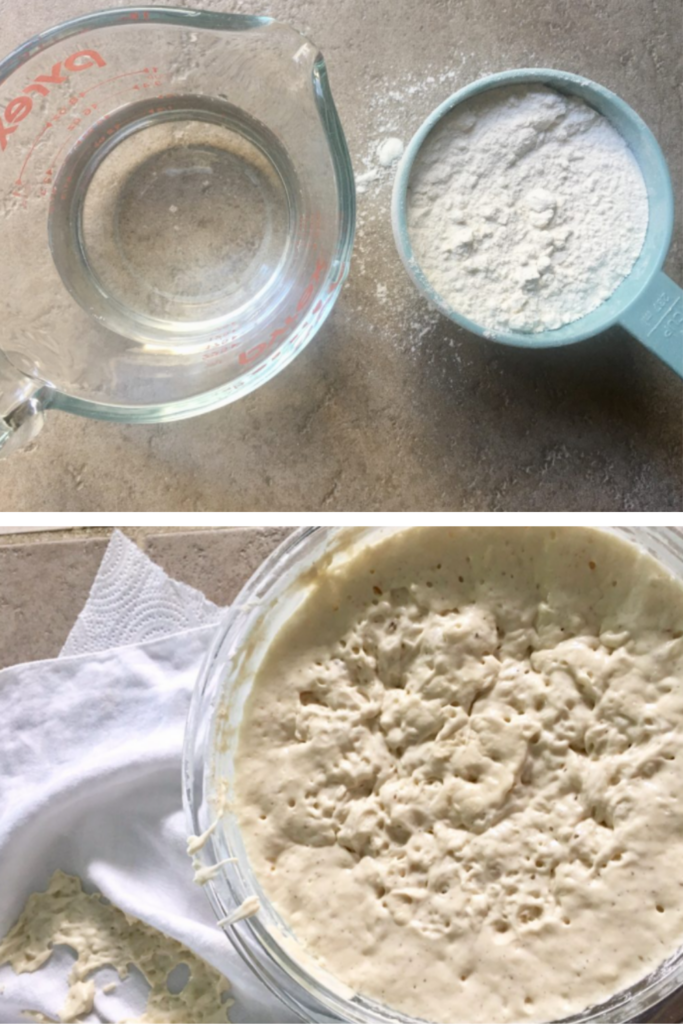
Sourdough Starter Recipe
Sourdough bread is by far the best bread I have ever eaten, but it starts by making a sourdough starter recipe. The process is very easy and only requires a little bit of your time each day to get started.
Eating sourdough has changed my husband’s and my life! We were gluten free for years, as regular bread gave us tummy troubles. However, now we eat all sorts of sourdough recipes and we love it, but it starts with a great sourdough starter recipe!
If you have Celiacs disease, please do not try this method using regular flour. The fermentation process of sourdough starter breaks down the gluten, making it easier to digest. We only make sourdough recipes where the dough ferments overnight. This helps break it down even more, and we have ZERO problems.
Just 2-Ingredients To Start
Sourdough bread starts with a great sourdough starter recipe. Your starter is just 2-ingredients, water and flour. You “feed” your starter everyday with water and flour. Feeding it gives your starter the food it needs to stay active and thrive. You know your starter is happy when it’s bubbly.
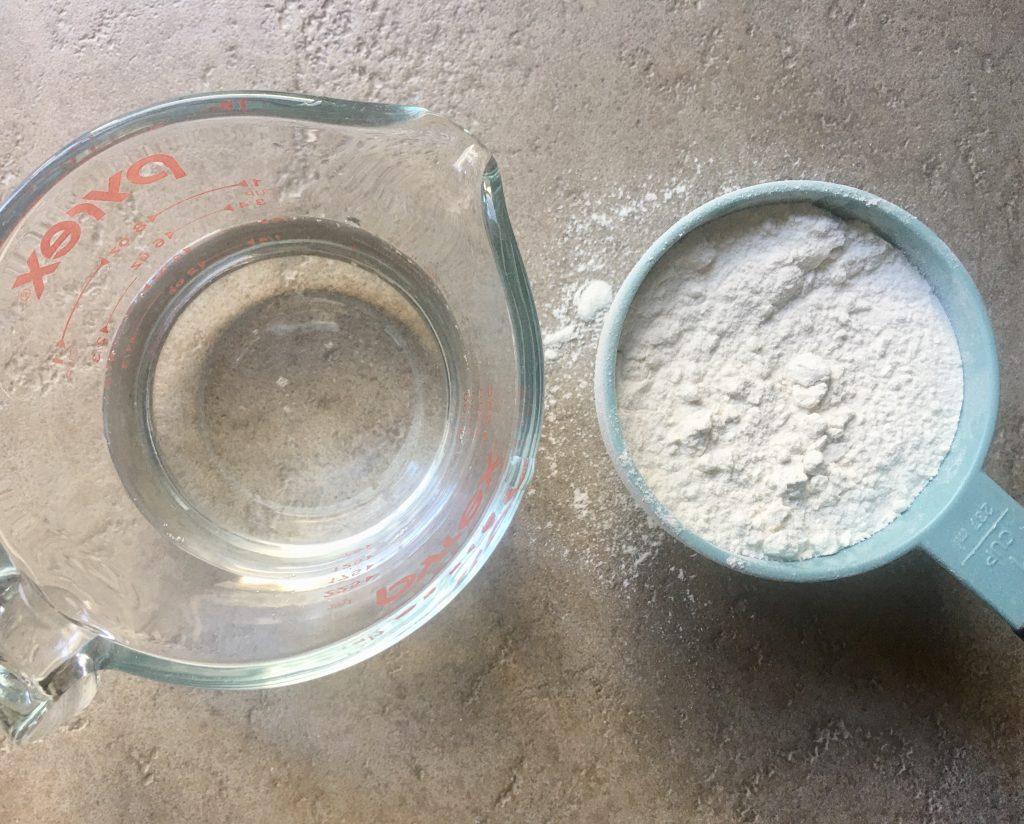
How To Make A Sourdough Starter:
- 120 grams water (1/2 cup)
- 120 grams of flour (1 cup)
All you need is flour and water. Because you will be feeding your starter everyday, make sure you have enough flour. It takes about 7-14 days to make your starter. There is a large window because it all depends on your climate. How hot or cold it is… starters thrives in heat!
This feeding process allows the water and flour to ferment. During the fermentation process, many things are happening and your starter is changing. The longer it ferments the yeastier your sourdough starter smells. Yes, my starter right now smells like a loaf of bread! It’s crazy!
I prefer using a kitchen scale when measuring out ingredients for my starter. It’s not necessary, but if you want to be exact, buy a kitchen scale. They are relatively cheap. This is the scale I have:
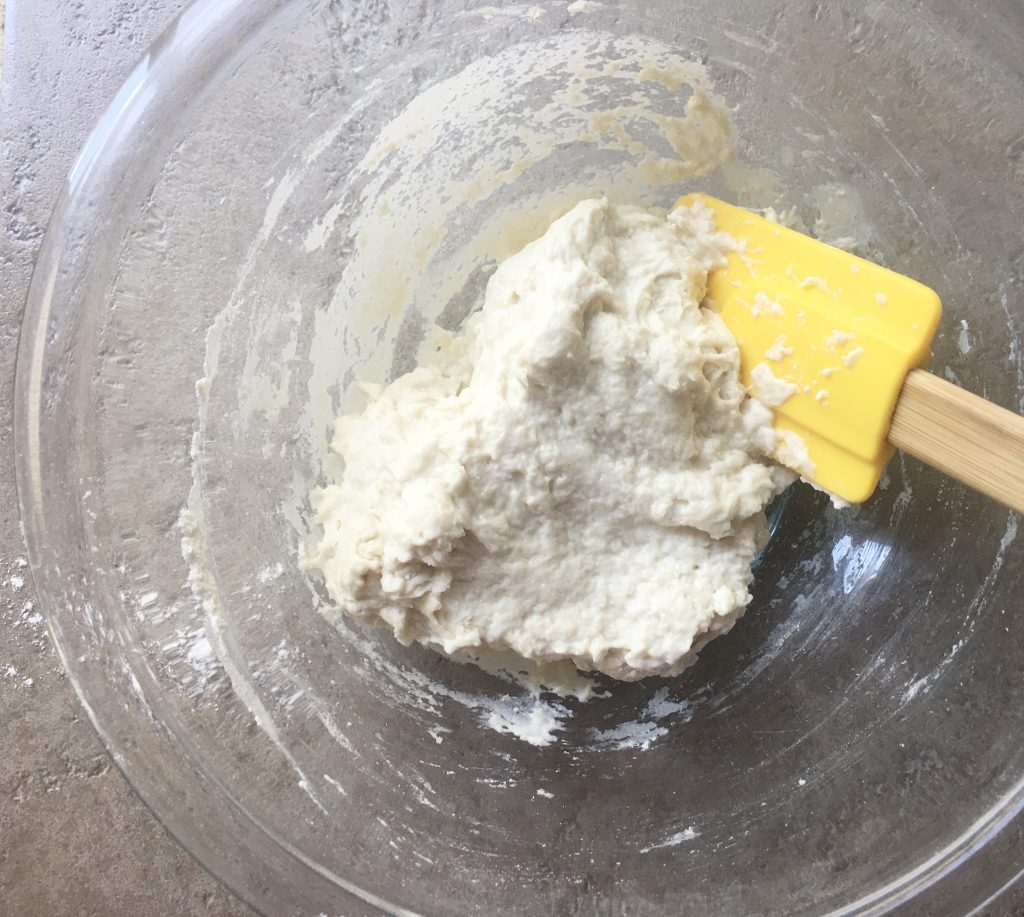
Day 1:
Mix together (120g or 1/2 cup) water with (120g or 1 cup) flour in a jar or bowl, the type of vessel you use doesn’t matter, except for stainless steel. I would probably stay away from that type of material only because it could manipulate the temperature of your bowl more drastically. Many people say the type of water and flour doesn’t matter, I would agree. Don’t make this complicated… it’s really easy!
However, for those with gluten sensitivities, I highly recommend a high quality flour. The ONLY flour we use is King Arthur’s Unbleached flour. We LOVE this flour for many reasons, but the BIG reason is because there is only 2 ingredients: Unbleached Hard Red Wheat Flour and Malted Barley Flour (unlike conventional flour with many additives).
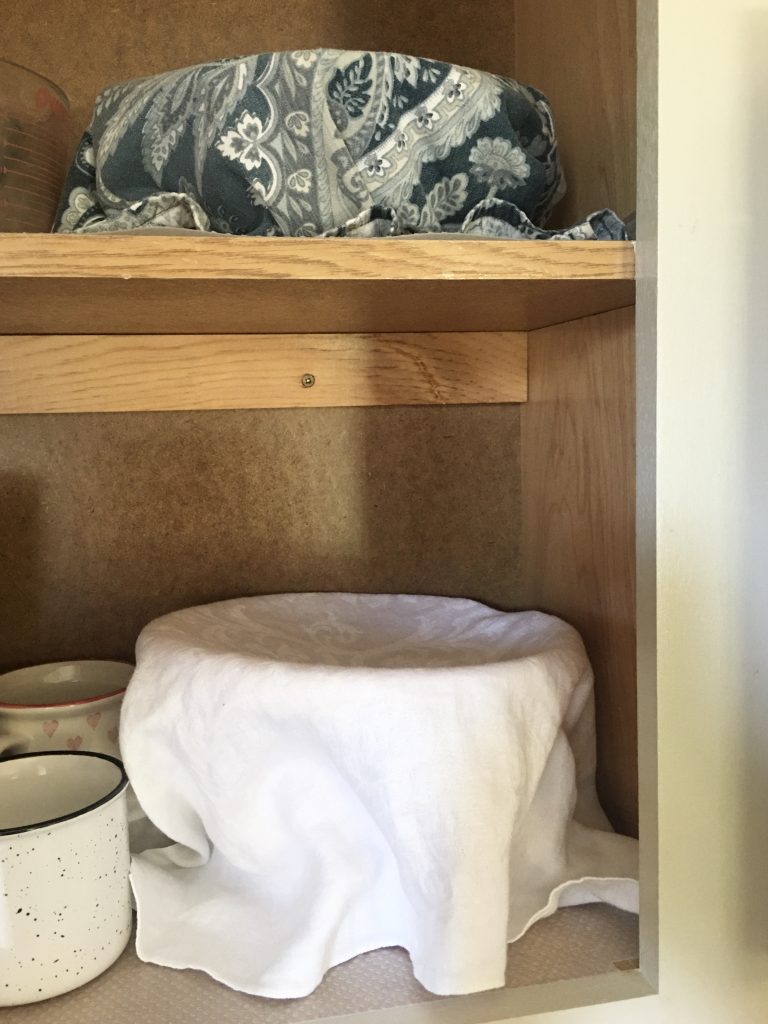
Lay a cloth napkin or dish towel over the starter. I like to put my sourdough starter in the cabinet next to my stove, but on the kitchen counter works too. (If it’s cold where you are, place a towel underneath the bowl. The starter won’t thrive where it’s cold.
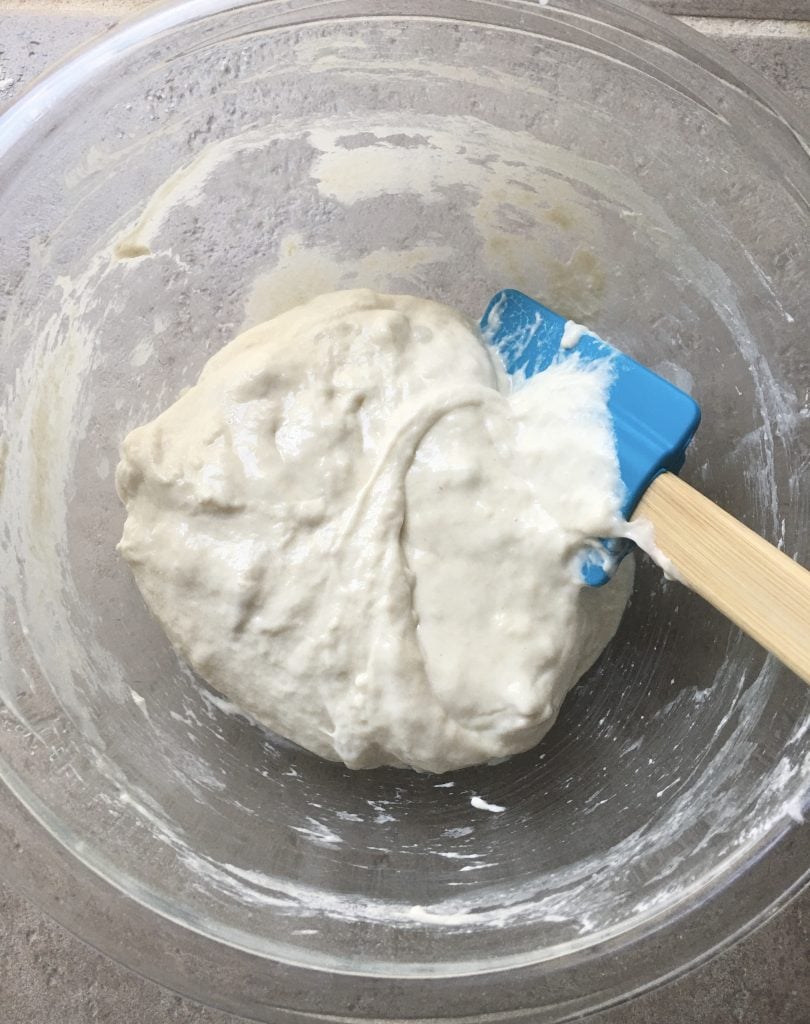
Day 2:
After 24 hours, it’s time to feed your starter again. Discard about half of your starter, and feed again (120g or 1/2 cup) water with (120g or 1 cup) flour. I know discarding seems wasteful, but just remember building your starter is key in the beginning, then you don’t have to discard anymore. I NEVER do now, but in the beginning it’s necessary!
Lay your cloth napkin or towel back over the top, and let it sit again.
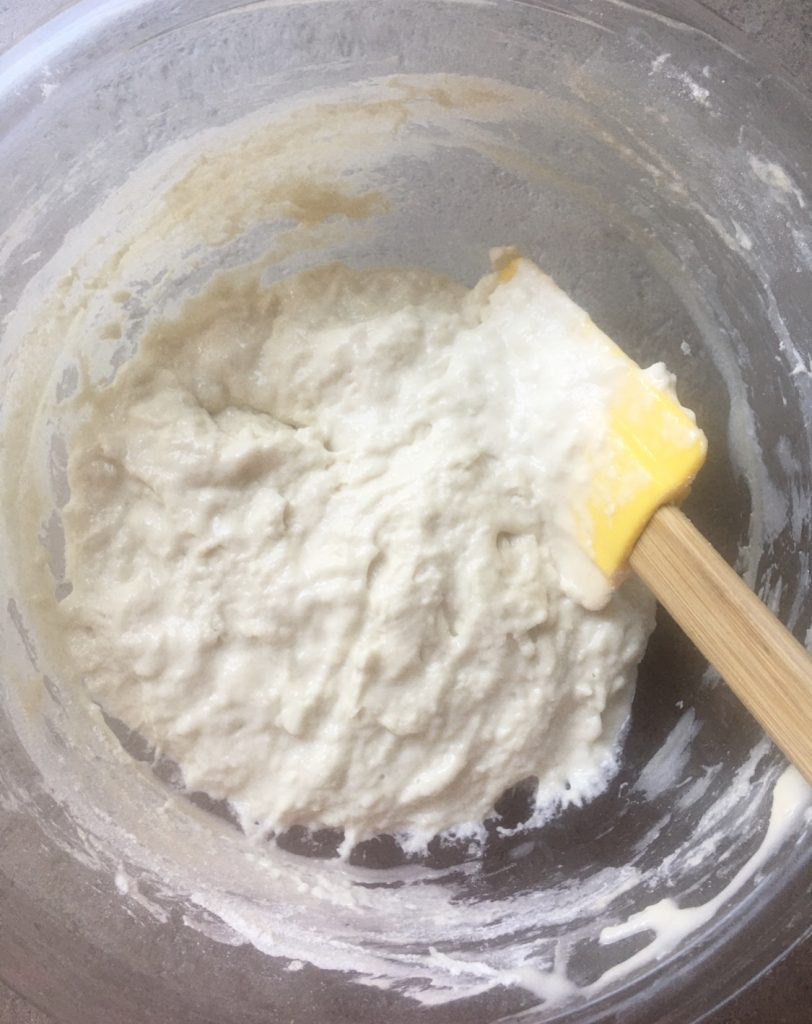
Day 3:
On day 3 you will start feeding your starter 2 times per day. In the morning, you will discard 1/2 your starter again and feed, same as above. In the evening (about 12 hours later), you will repeat the process again, discard half and feed.
Just FYI: your starter may stink for a few days. It’s just working its magic, so don’t fear!
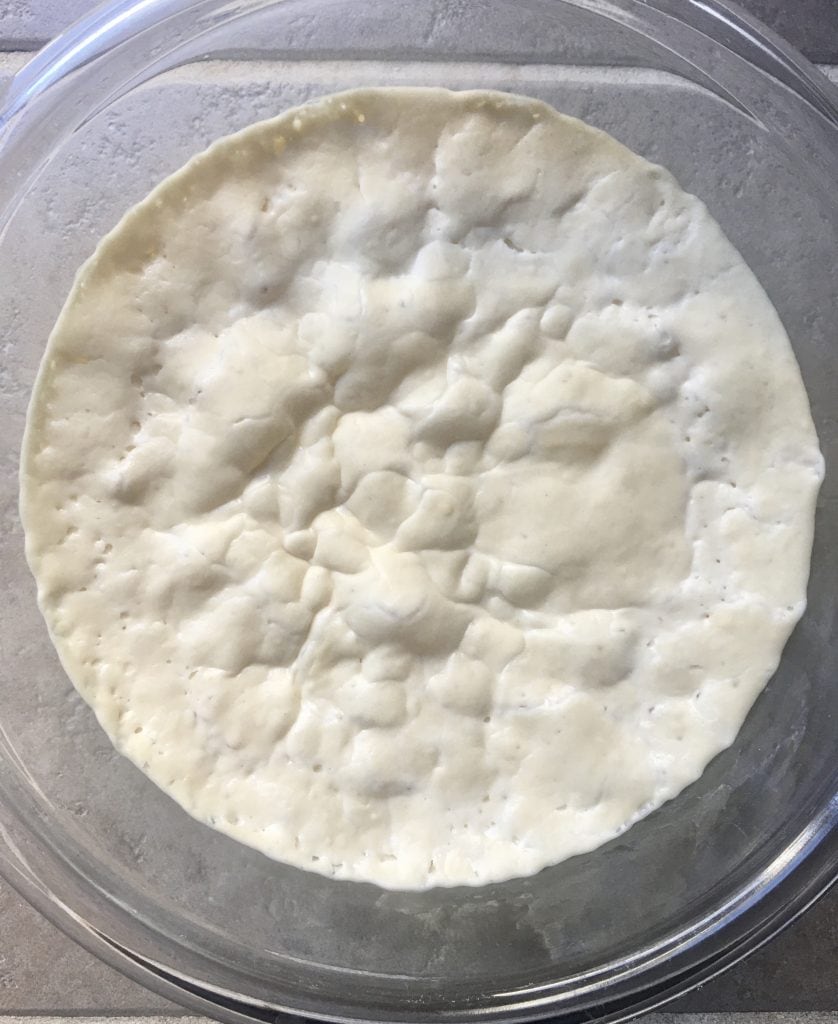
Day 4-7
You should be continuing the feeding process. 2 times per day you are discarding and feeding. Your starter should be smelling more and more like sourdough. It should have a tangy sour smell.
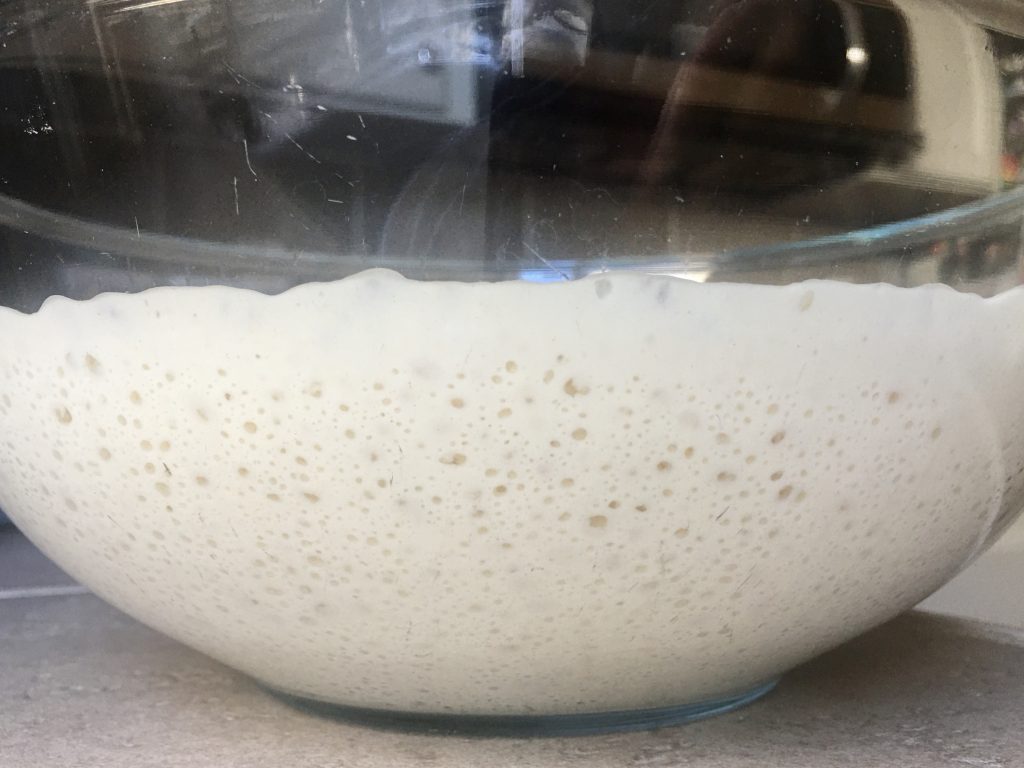
At this point, your starter could be bubbly and active, with bubbles throughout and bursting through on top. If it is not, then no worries. Keep repeating the process each day. Sometimes it takes 14 days or so… but you will get there!
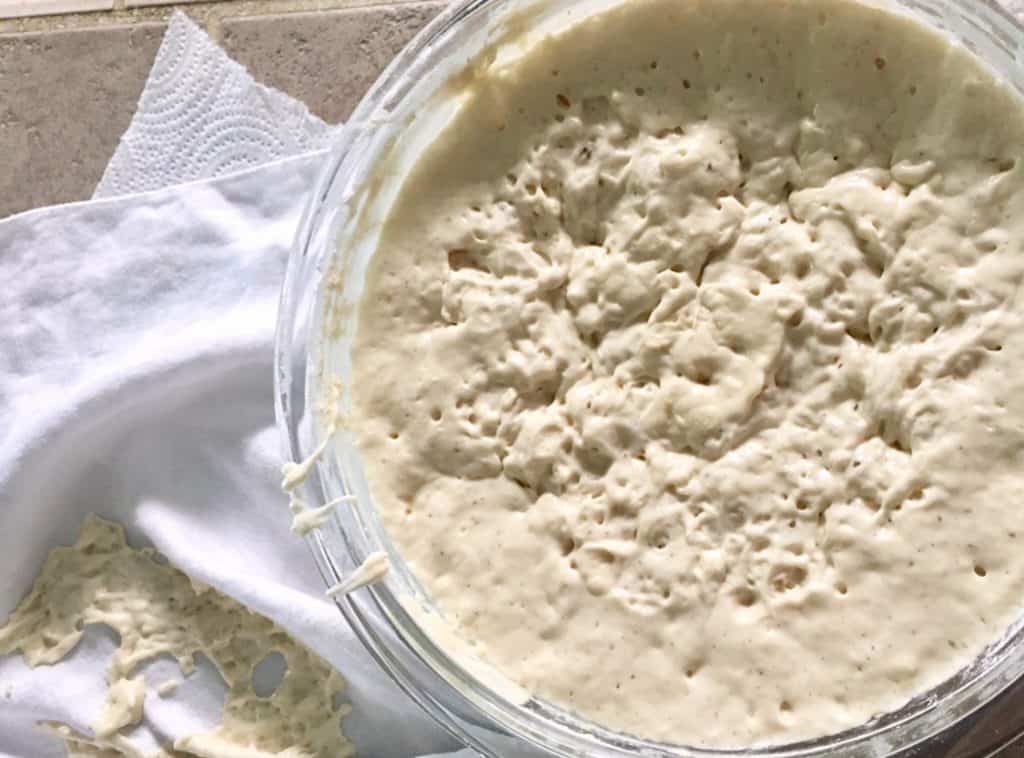
This picture above shows my very active starter. I bulked up my starter to make a huge batch of sourdough bread. Bulking up means I added 500g of water and 500g of flour to my starter, so that I would have enough starter for the next day to make 6 loaves.
I do not recommend this when first starting out, but once you get the hang of it, you can make a lot of this sourdough starter recipe to make big batches of bread.
How To Know Sourdough Starter Is Ready
There are 2 ways to test your sourdough starter recipe.
- float test
- rubber band test
Sourdough Starter Float Test
To see if your sourdough starter is active and ready to make sourdough recipes, try the float test.
- Fill a cup with 1 cup of lukewarm water.
- Drop 1 tsp. of your sourdough starter into the cup of water.
- If the starter floats, it’s ready! If the starter drops to the bottom, them continue to feed your starter for another day or two.
Sourdough Starter Rubber Band Test
- Fill a jar with about 1 cup of jest fed sourdough starter.
- Put a rubber band on the outside of the cup where the top of the starter is.
- Place a towel over the starter and walk away for about 4 hours.
- If the starter has doubled in size, or at least 1-2 inches higher than where the rubber band is, then you have active and ready to use sourdough starter.
Ready To Bake Sourdough Bread
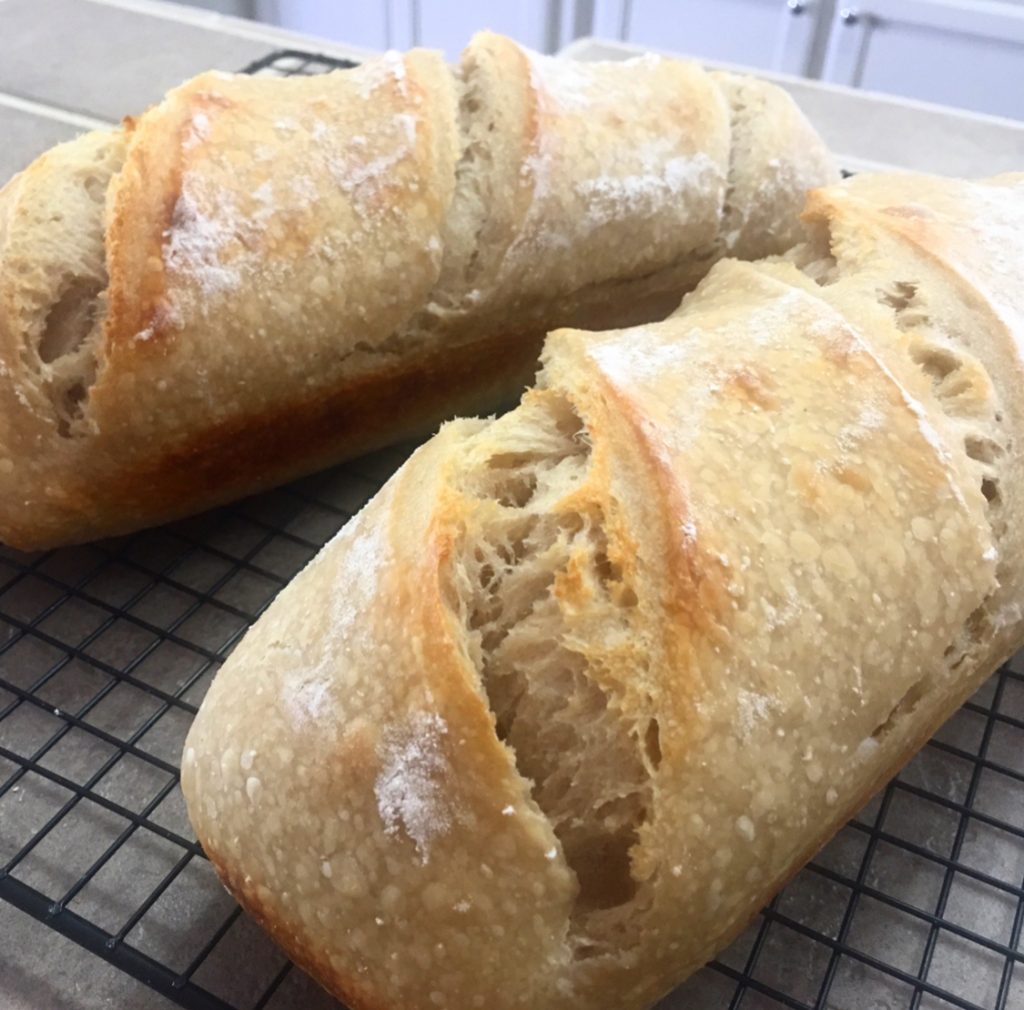
Once your starter is bubbly and ready, it’s time to bake bread! How exciting! Here is my FAVORITE recipe for making bread. My sweet friend Grace shared her recipe with me and it’s delicious! I haven’t tried any other recipes. This is the only recipe I make for regular sourdough bread.
How To Make Sourdough Starter Into Bread
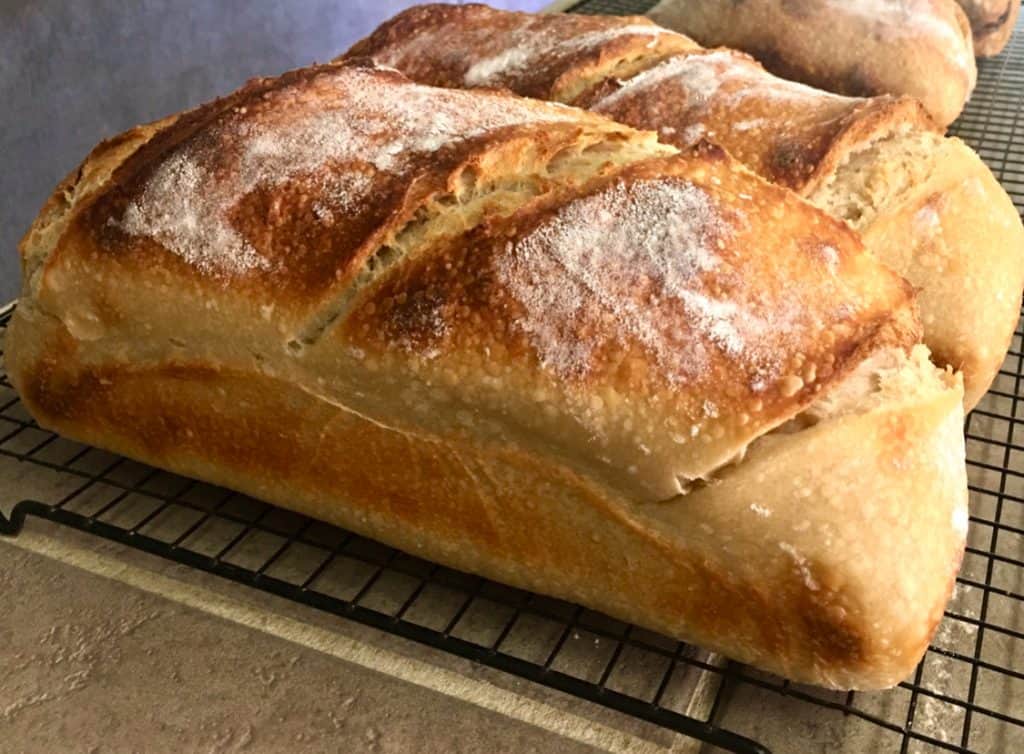
CLICK HERE – Sourdough Bread Recipe
Pin For Later!

Other Favorite Sourdough Recipes
I ONLY make sourdough recipes where the dough has time to ferment overnight. This gives the gluten time to break down, so our tummies don’t have any troubles.
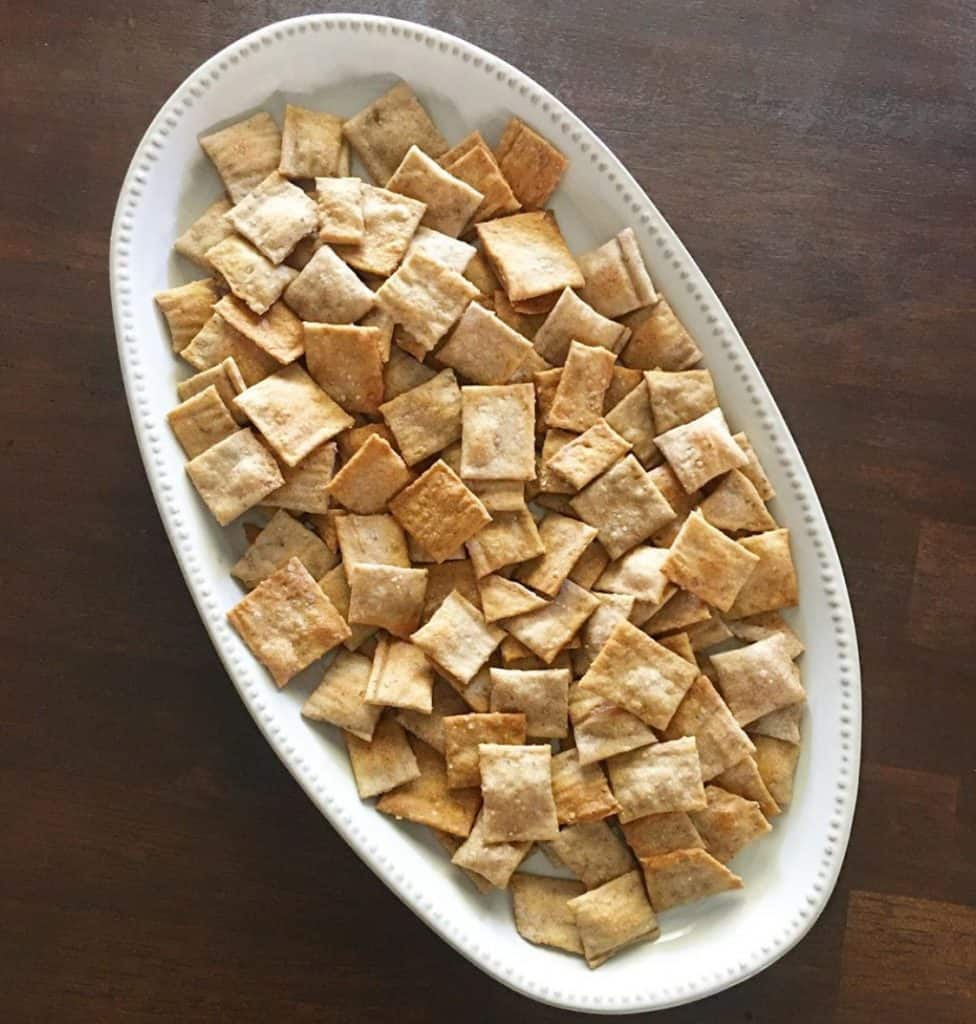
SOURDOUGH CRACKERS RECIPE – original recipe from King Arthur’s website.
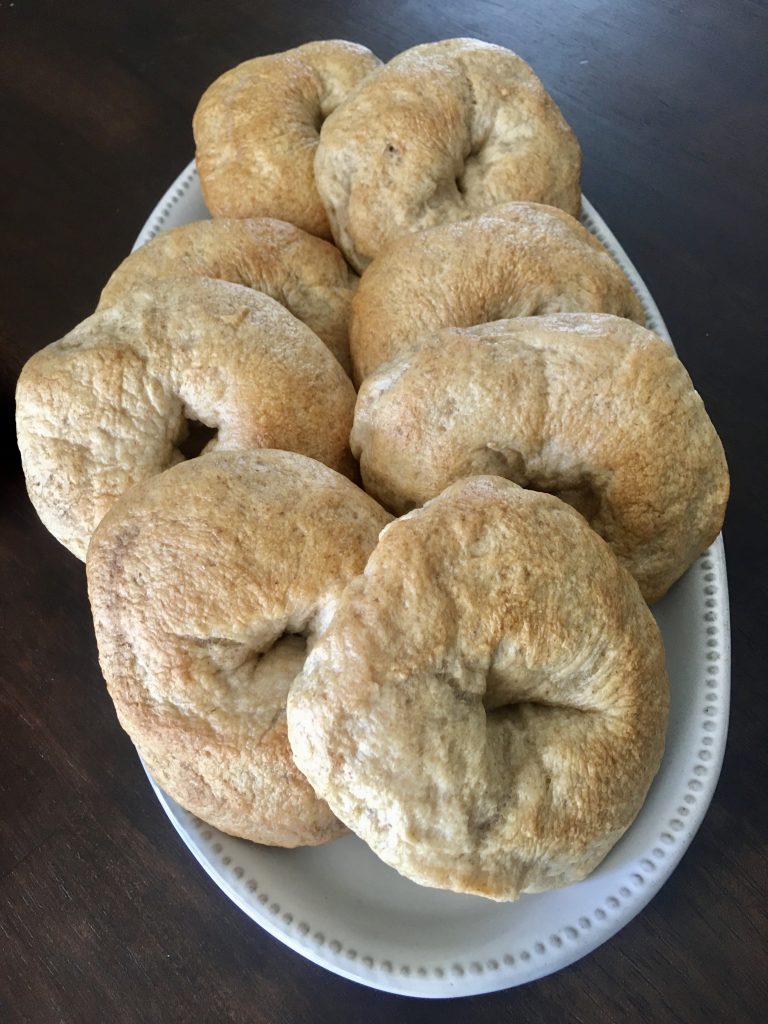
FRESH SOURDOUGH BAGELS – recipe from Little Spoon Farm
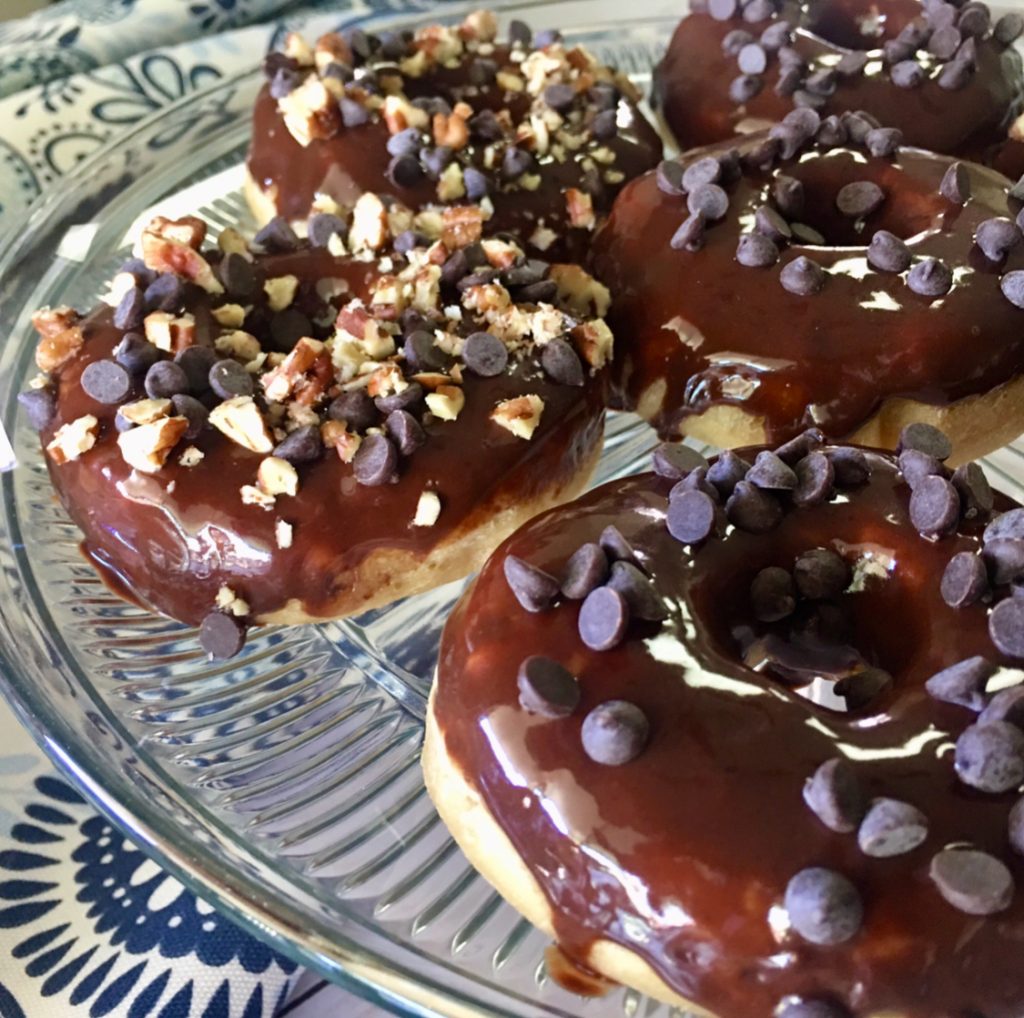
Baked Sourdough Donuts recipe will be coming soon 🙂
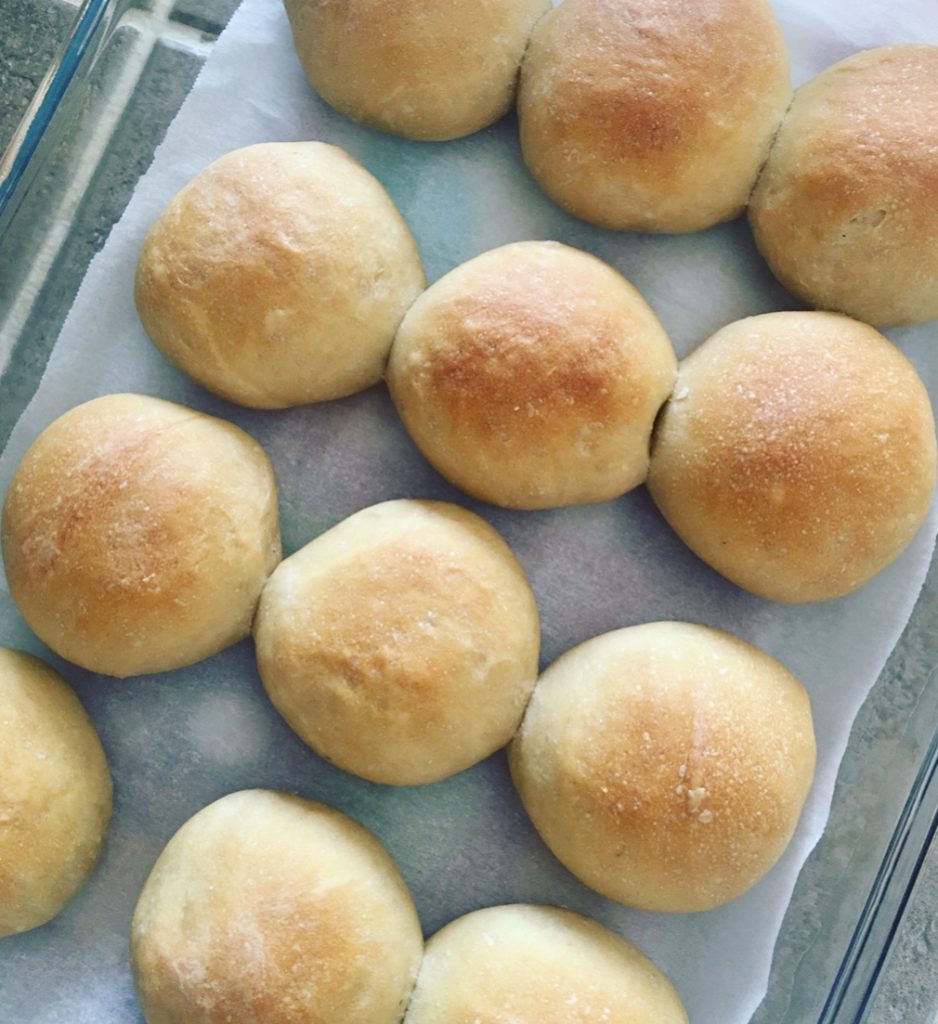
Sourdough Dinner Roll recipe will be coming soon 🙂
Real Sourdough Pita Bread – recipe from Butter For All
Sourdough English Muffins – recipe from Little Spoon Farm
I am on day 3 today! Can’t wait to try making the bread!
Great tutorial!! When you freeze your bread do you slice before you freeze or after you thaw? Also, how much does the freezing change the texture…. is it still soft enough for sandwiches?
Thank you! I do not pre-slice the bread before freezing. I simply freeze a whole loaf. Freezing only changes the texture of the crust. It won’t be as crunchy. However, this bread frozen or fresh, makes the best sandwiches! If the bread gets a little dry from sitting out in the pantry, just toast it. It’s amazing!
Hi! Can’t wait to try this 🙂 Just wondering, can you make a second batch of sour dough from your “discards” so you can make lots of bread?
I really want to try your sour dough recipe. You make it look so simple.
Hi! Thanks for this recipe! I’m looking forward to trying it! Have you ever heard of anyone making sourdough starter with gluten free bread? I know that you said the fermentation takes the gluten out. But it still makes me a little bit nervous. I would prefer to try it with gluten-free flour I’m just not sure how it would turn out. Or even almond flour? Have you ever tried it with that? Thanks for any tips!
You can make a sourdough starter with many other flours than with wheat! May I recommend a book for you to check out? It’s called Baking Sourdough Bread by Goran Soderin. In that book they will teach you how to make a sourdough starter using potato flour, oat flour, lentil flour, and more. It’s really cool and a resource you might find helpful.
How do you store the starter after it is ready?
I store it on the counter when I’m using it often, or I store it in the refrigerator when I’m not planning on using it for a week or so.
I am new to your site. Enjoying everything I’ve read and seen!!!
I’ve been making sourdough for a few years. I tried your recipe yesterday and finished today. Oh my, the best I’ve tasted. Tried a piece toasted for supper. The best I’ve tasted. Found a new recipe and it’s a keeper!!!! Thank you for sharing.
Keep up the great work.
I’m so glad you loved it!
I’ve been making sourdough bread for years. My dad is celiac and I would never feed him my bread because there is still gluten in it. The gluten makes the dough stretchy.
The sourdough process does break down the gluten but only a very small amount.
The sourdough process DOES break down the sugars called fructans which do cause stomach issues.
Monash Univeraity in Australia has done a lot of reaearch on foods that cause IBS called FODMAPS. Gluten for IBS is not an issue.